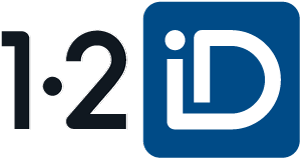The New Normal: Remote Work, Cybersecurity, and how a SSO solution enhances security
The global workforce has undergone a profound transformation in recent years, with remote work becoming the new norm. Accelerated by the COVID-19 pandemic, this shift has had far-reaching implications, particularly for cybersecurity. In this blog post, we'll explore the challenges and solutions associated with remote work and how businesses can maintain security and compliance standards in a distributed work environment. We'll also delve into how 12iD's Single Sign-On (SSO) technology can leverage the security of this new normal.
The Remote Work Revolution
Remote work, once a fringe concept, has become a pervasive reality. In response to the pandemic, companies rapidly adopted remote work to protect employee health, and many have continued with remote or hybrid work arrangements due to the newfound benefits in flexibility and cost savings. While this change has brought numerous advantages, it has also exposed businesses to increased cybersecurity risks.
The widespread adoption of remote work presents several unique challenges for cybersecurity. These include an expanded attack surface, data leakage risks, increased vulnerability to phishing and social engineering, complex device management, and compliance concerns. As employees access company data from various locations, it becomes vital to ensure their identities are securely authenticated.
Solutions for Secure Remote Work with 12iD's SSO Technology
12iD's Single Sign-On (SSO) technology is a valuable asset in maintaining security during the remote work era:
Streamlined Access: SSO allows employees to access multiple applications with a single set of credentials, simplifying the login process. This means that access to sensitive company information can be managed more effectively, reducing the potential for unauthorized access.
Enhanced Security: SSO systems often employ robust security measures, including multi-factor authentication (MFA) and advanced encryption protocols, which significantly bolster remote work security.
Consistent User Experience: SSO ensures that users have a consistent, user-friendly experience across various applications and devices. This consistency extends to security practices, reducing the chances of user error that could lead to breaches.
Efficient Device Management: SSO solutions can be integrated with device management systems, enabling organizations to apply security policies and updates uniformly to remote devices.
Remote Access Monitoring: SSO technology often includes features that allow administrators to monitor remote access and user activity, providing an extra layer of security.
Data Compliance: By centralizing access control and monitoring, SSO can aid in compliance with data protection regulations by ensuring that access is granted only to authorized individuals.
The Future of Remote Work Security with 12iD
As remote work continues to evolve, businesses will need to continually adapt their cybersecurity strategies. By leveraging SSO technology, companies can achieve the right balance between flexibility and security. Remote work is here to stay, and those businesses that prioritize cybersecurity, especially with the assistance of advanced technologies like 12iD's SSO, will be best positioned to thrive while protecting their most valuable asset: data.
As employees gain greater flexibility and autonomy, businesses must simultaneously address the new cybersecurity challenges that come with this transformation. By embracing modern security practices, investing in cybersecurity solutions, and educating employees, organizations can maintain data integrity, protect against cyber threats, and foster a secure and productive remote work environment. 12iD's SSO technology stands as a key ally in ensuring that remote work is both secure and efficient, making it the right solution for businesses seeking to adapt to the new normal.
Image by pvproductions on Freepik


